Style - everyone has it. Style comes in so many shapes and forms from retro to emo to classy, professional to suave, slick to club chick, chic to shabby chic, 30s, 40s and 50s to the 60s, 70s, 80s, 90s and beyond.
Of course, whilst there are so many styles, there is also YOUR style. It’s not to say that anyone can’t wear anything - within reason - but just that most people settle on their signature style. Once we find our personal style, our fashion groove, we’re one step closer to becoming totally confident and unafraid - and comfortable with how we view ourselves and how others view us.
This is a big part of looking and feeling pretty - which we’ve covered in this blog.
The fundamental point is that style isn’t all about external aesthetics, it’s about how you feel internally too, and the connection between the two.
The goal? To look and feel stylish.
Personal Style Defined: Finding Your Style
Our style is influenced by so many things. It’s linked to the discipline and subject of fashion psychology, which you can actually study at many UK and international universities.
Fashion is very diverse and is woven into our cultural consciousness. We’re all aware of how fashion affects different cultures, and mirrors what they mean, and what they value.
For example, take one of the most well-known music movements of the 21st century - the punk movement. Most of us associated the words ‘punk fashion’ to leather, bike jackets, mohawk haircuts, jewellery and tattoos. The fashion here embodies the punk movement - it’s about squashing the status-quo, sticking up for one’s values and sticking a proverbial finger up to the powers that be.
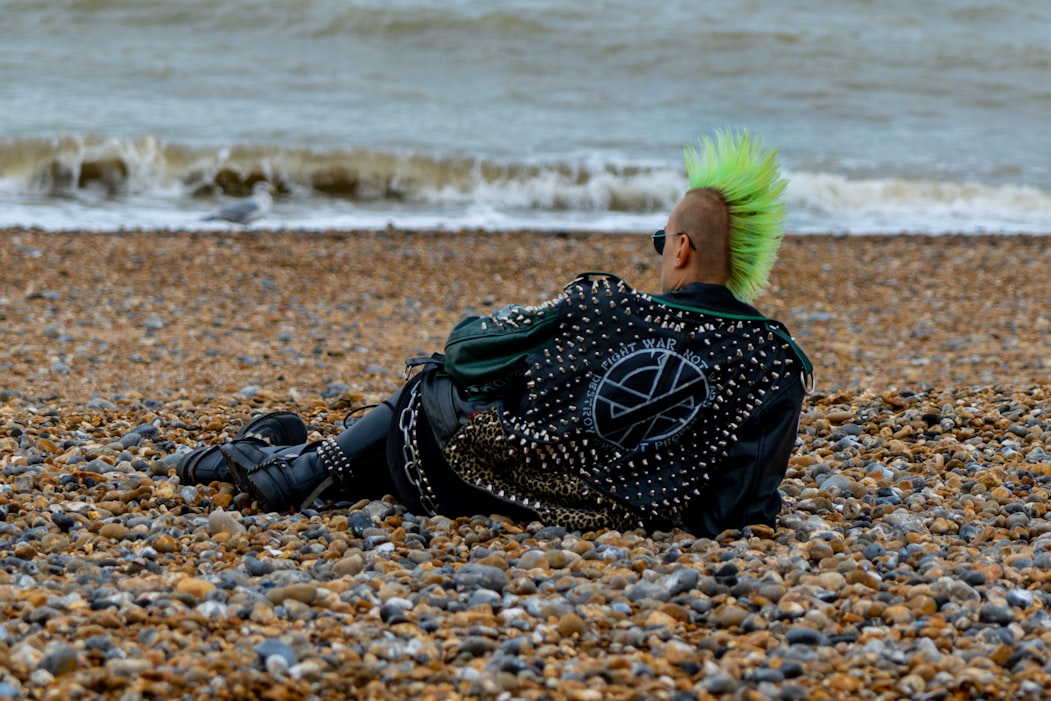
As the Roundhouse state on the history of punk fashion; “Punk epitomised a D.I.Y attitude to fashion as a reaction against the consumerism of 70s Post Modernism – and image was everything.”
Punk fashion came to later influence grunge fashion and modern rock fashion, which has been brought into the mainstream once more by individuals like Miley Cyrus and Billie Eilish and their metal band t-shirts.
Of course, these days, there are so many different fashion styles. Let’s make a brief list of some of the main fashion styles that are popular and in-trend today:
- Artsy and hipster; similar in many ways, but artsy styles are perhaps a little more high-end in look whereas hipster fashion goes for the charity shop DIY aesthetic.
- Street and hip-hop; baggy clothes reigned supreme in the 90s hip-hop era. Today, street clothing involves a mixture of sports brands like Nike and Adidas combined with some high-end fashion labels, like Gucci and Prada.
- Grunge, rock, metal and punk; thoroughly in-trend once more. Dark clothes are standard but light denim and splashes of eccentric colour are also important. Metal and rock band t-shirts are a must. Goth and glam are pretty close to these styles, but as ever, there is plenty of nuance.
- Haute Couture and Lagenlook; two very different European fashion styles. Haute Couture is high-echelon fashion - the kind of statement pieces that dominate catwalks. Lagenlook is a classic European layered women’s fashion.
- Classy and elegant; classy, elegant fashion revolves around smart-casual and more formalwear scenarios. This is where more defined individual fashion images become a bit more blurred.
- Retro; retro encompasses so much these days and any and every era has its place in fashion. 70s, 80s and 90s retro fashion is thoroughly in-trend and is powered by a vibrant vintage clothing market.
- Kawaii; Kawaii fashion is inspired by modern Asian fashion and art. It focuses on ‘cuteness’, including emblems and designs inspired by anime. Kawaii fashion has grown hugely in recent years
- Mature and smart fashion; of course, some of these styles are more angled towards younger audiences, but that’s not to say that any of these aforementioned styles can only be enjoyed by young people. Smart, mature fashion will never become dated, though. For most people, there is a time and a place to look smart and mature.
- Bohemian/Boho-chic; a more classic version of the hipster. Harking back to Woodstock and before. Bohemian fashion is heavily inspired by the post-Vietnam flower power era.
- Casual/chill; there's nothing to say that you can’t just look chill. Casualwear varies massively, it encompasses a bit of every style. All genres of fashion and clothing overlap somewhat when it comes to just looking casual, and comfortable, which is what many people value on a daily basis.
This is by no means an exhaustive list of different fashion styles. Fashion is practically limitless and changing all the time. It may be that some of these categories resonate with you, or possibly that you’re unsure.
Next, we’re going to look at why your style matters and what you can do to learn more about it.
Why Your Style Matters
"Personal style is a powerful tool for self-expression and communicating your values,” that’s what Clare Press, the podcast host for Wardrobe Crisis, told NBC News in an article about the personal styles of 6 successful women.

Here, women describe why their styles matter and the emerging theme is that their style communicates some of who they are, their values, principles and personality. This really helps with communication, both in new and ongoing social situations. It also highlights the importance of fashion flexibility - even the most hardcore punk may have to dress smartly for a job interview or important event!
There are loads of studies into how and why our choice of clothes affects our mood and the way we behave. Feeling comfortable in your clothes - and comfortable with your style - is a catalyst for contentment, satisfaction, happiness and even performance, whether at work or in a social situation.
That is why your style matters - it helps bring forth the strongest version of you.
Find Your Personal Style Step 1: Look at What You Already Own
What clothing do you own already? What does your house look like? Your car? What about your phone background, your app colour schemes, your PC colour schemes?
This should provide you with clues into your current style. It depends on what you’re looking to get out of learning more about your personal style. Do you want to transform yourself, reinvent yourself even? Or maybe you’re just unsure of your current style, or aren’t sure as to whether you really know anything about your style at all.
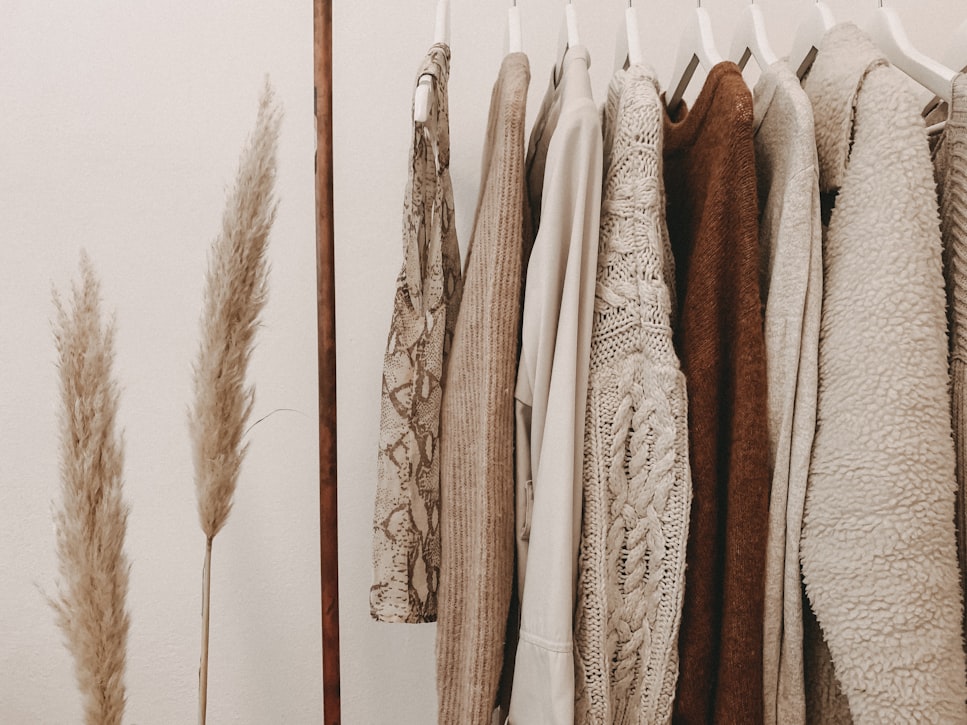
It’s worth comparing the things you really enjoy to your wardrobe. For example, you might be a big fan of comic books but own a comparatively dull and drab wardrobe. You might love hip-hop, jazz or blues, but own no pieces that really suggest this in any way. You might have a strong passion for the outdoors, but your wardrobe is more boring than you actually are.
The point is not to condemn yourself for your wardrobe, but to criticise it as if it’s a painting or a drawing - a proper critique. Examine the themes;
“What are the themes of my wardrobe and how can it be improved?.. Discuss (30 marks)”
That’s a joke, of course! But here are some common situations to get you thinking:
- “Where’s the colour?!” Dull and drab wardrobes are common. Duller, darker clothes always have their place and not everyone wants to dress up in all colours, but there’s rarely an occasion where no colour at all is the best route to go down. Colour is a big part of life and can make us feel different, and can make others perceive us different. Look at our article on colour combinations to get stuck into reassembling your wardrobe with some cool new colour combos. Check out our article on the best colour schemes for 2021/2022.
- “Where’s my personality?!” Our wardrobe may not express or reflect our personality. There might be some nice clothes there, but the themes may be forced by what we feel we should wear rather than what we want to wear. Do you crave going out in knee-high boots and animal print leggings but only own boot-cut jeans? Do you want to look more mature but still have a wardrobe packed full of 90s skater brands? Try re-calibrating your wardrobe to add more that reflects who you are right now.
- “What’s my age again?!” Related to the above point, sometimes a self-wardrobe-critique reveals some themes that might’ve been more effective when we’re younger, or even older. This isn’t to say that you need to fully step away from fashion that makes you youthful or nostalgic - this might look great on you - but you may need an injection of elegance, maturity and classiness.
The goal of this is to get to the bottom of what your style is, and how you want to change or transform it going forwards. Try and inject some of your personality into your fashion selections. If you like a particular genre of music, then add something there. The same goes for films, TV, art and other cultures - find pieces that echo your interests.
Find Your Personal Style Step 2: Get Inspiration
Once you know where you are, it’s time to get inspiration on where you want to go with your personal style.
We live in the most diverse, dynamic fashion era of all-time. It depends on where you are in the world, but in the UK, particularly London and other major cities, it’s abundantly obvious that anything goes. Other countries and/or cities might have their own vibe or cultural fashion staple. Paris is a major example, as is Milan, where high fashion is probably more popular than in say, London.
Broadly speaking, though, anything goes these days. This provides us with infinite possibilities to explore when it comes to forging our own personal style.
For inspiration, trawling through the major fashion publications is always useful. Of course, there’s tons of high-end fashion in publications like Vogue, but also a lot of grounded, more day-to-day inspiration too.
Pinterest is a massive one here. There are thousands of Pinterest boards dedicated to fashion. If you start plugging in keywords like ‘punk fashion board’ or ‘hippy clothing’, ‘art clothing’, ‘casual fashion’, etc, then you’ll find instant results. Set the search bar to ‘boards’ and you’re good to go. This is an excellent way to find inspiration for your personal style.
Here’s some Pinterest fashion inspiration boards we found:
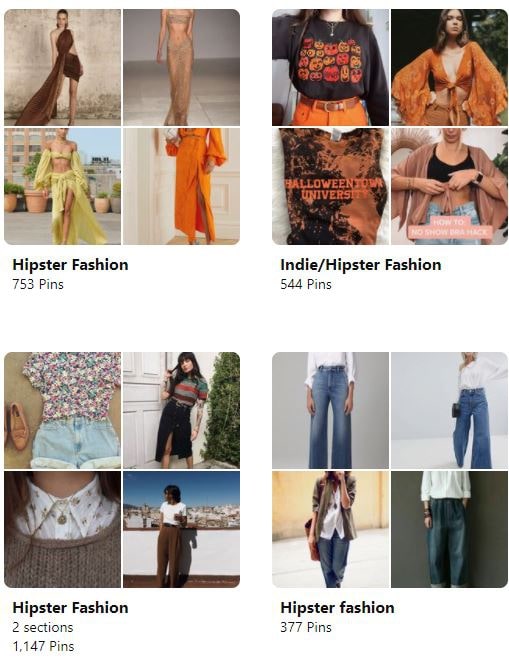
Here are some hipster fashion Pinterest boards. You can see how this differs to more classic Bohemian hippy fashion. Some if its pretty subtle - more subtle than you might assume.
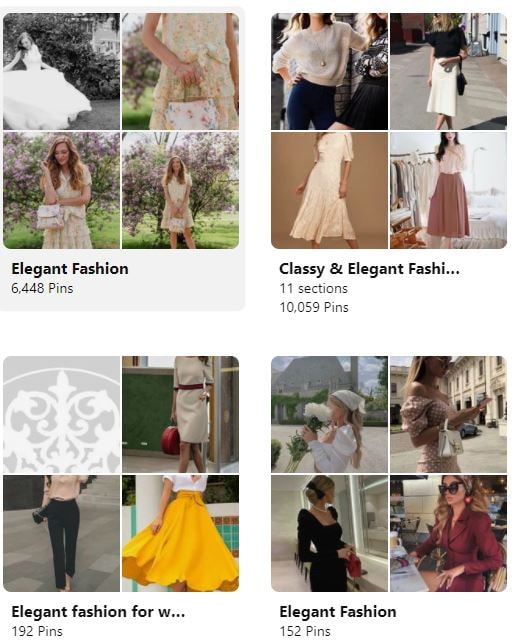
These are the sorts of outfits returned by searching for 'elegant fashion'. You can find more classy, smart-casual and smart fashion inspiration here. Perfect for dressing up to go out-out!
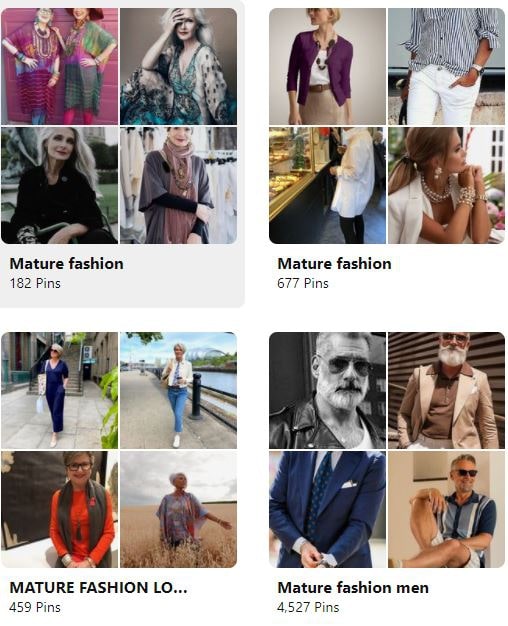
Here are some mature fashion trends. There comes a time where wardrobes transition somewhat to more mature styles - but they still look great - and you don't need to caste all of your youthful styles to the bin!
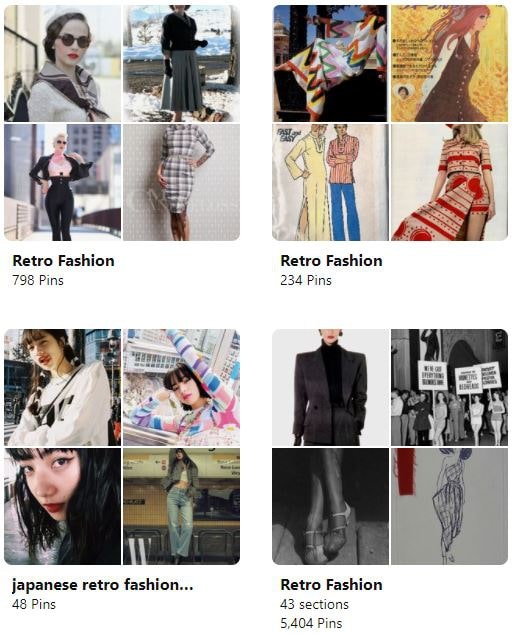
And here we have retro fashion. Some classic 60s and 70s styles on offer that are bang in-trend right now. Fashion is cyclical - it's also rotating.
Find Your Personal Style Step 3: Make Your Own Mood Board
Once you have a sense of the style you’re wishing to create and transform and some inspiration of how to do it, it’s time to make your own mood board.
Pinterest again is a fantastic tool for making mood boards. You can make an account and create your own boards using pins from other people’s boards.
You could also make your own physical mood board by printing and cutting ideas.
Add plenty of material to your board - you don’t need to confine it to one style or fashion genre if you don’t want to. You can add lots of different styles there if you’re interested in all of them, or you might find yourself narrowing them down naturally as you go on.
Your mood board will act as a basecamp, a springboard from where you can launch your new style initiative!
Find Your Personal Style Step 4: Get Shopping!
Know what you want to change or transform your style? Check.
Understand that all styles are awesome and there’s no reason to not go for it? Check.
Looked at various inspiration from people that agree with you and share some common stylistic ground? Check.
Time to go shopping!
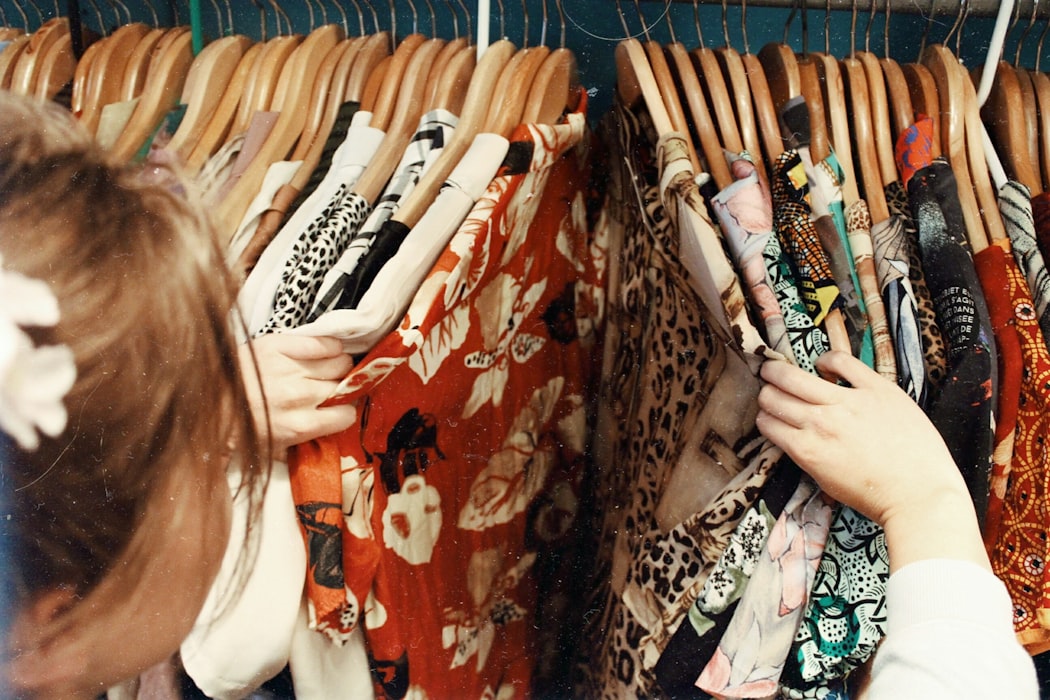
Shopping is the fun bit, but start with the pieces that really build your style first. For a reawakened rock chick, that might be a faux-leather jacket and rock band t-shirt. For someone who loves art but owned nothing artsy, it’s time to find pieces that reflect that artiness, e.g. cool prints.
Your mood board should guide your shopping journey. It’s not all about clothing but about accessories too, which provide a superb way to instantly add more features to your wardrobe without breaking the bank.
Keep colour theory in mind and learn about your body type too - this will guide your shopping journey. Remember, this isn’t about ripping your old wardrobe to shreds, it’s about enhancing your own personal style.
Once your new garments and accessories start trickling in, it’s time to assemble some sets of clothing and try them on. Snap the success stories for later reference and keep working on it if you still feel there’s still something missing.
Find Your Personal Style Step 5: Observe How You Feel as Well as How You Look
Personal style is about how you feel as much as it is about how you look.
Once you’ve assembled some outfits and begin to wear them out and about, observe how you feel in them. Don’t worry so much about what anyone else says - that may be hard in practice, but the primary goal is to feel good about it. Once you feel good about it, compliments will flow in naturally!
Refining your personal style is easier once you’ve established what that personal style is. Be methodical, be creative and be brave!
Summary: Finding Your Personal Style
That’s it...it’s as easy as 1, 2, 3, 4, 5.
Finding your personal style will reinvigorate you on the inside and outside. It’s an excellent way to breathe a new lease of life into your wardrobe. Embrace fashion trends, past and present, and be open with how you approach your new style. Remember to pay attention to how you feel, not just how you look.
If you feel good, then it’s all good!
Good luck!